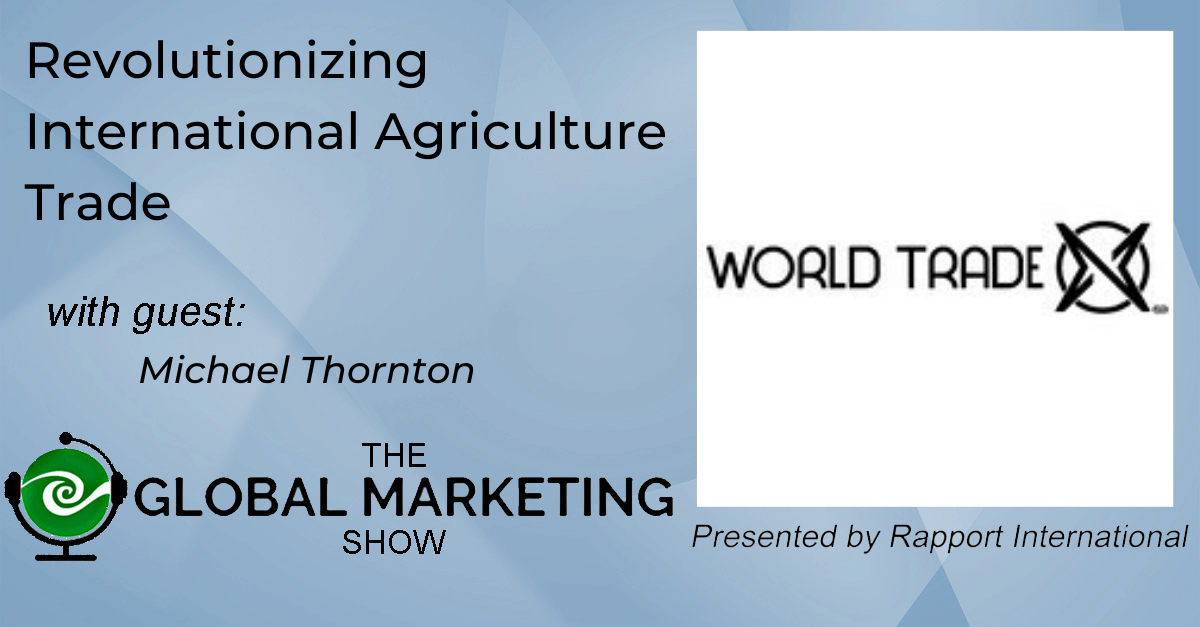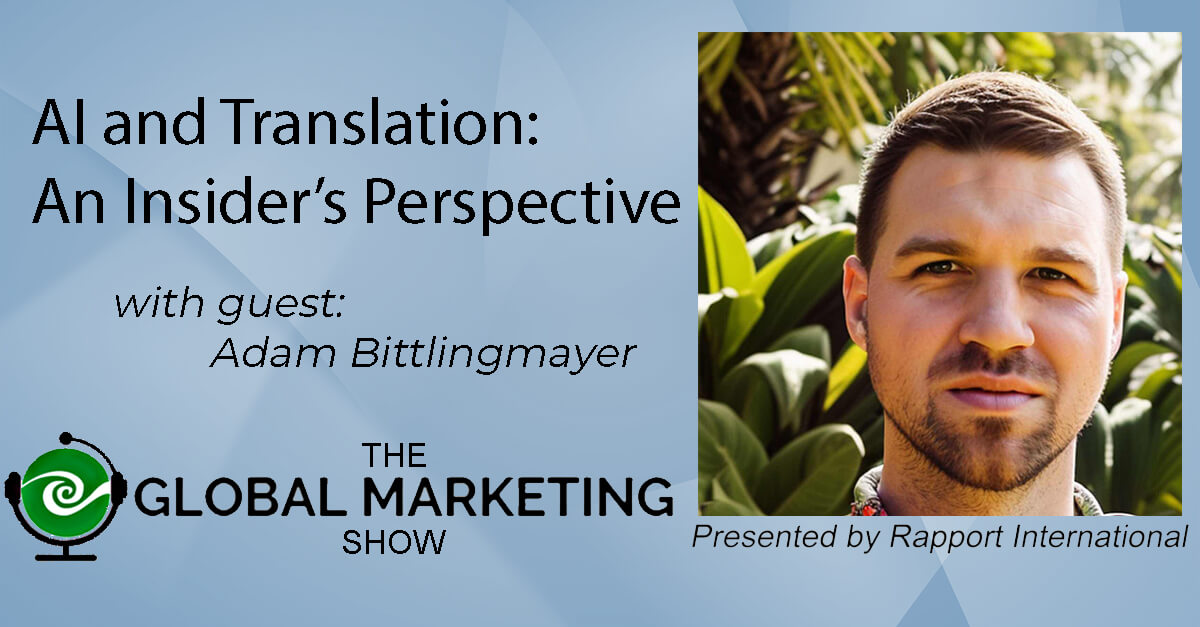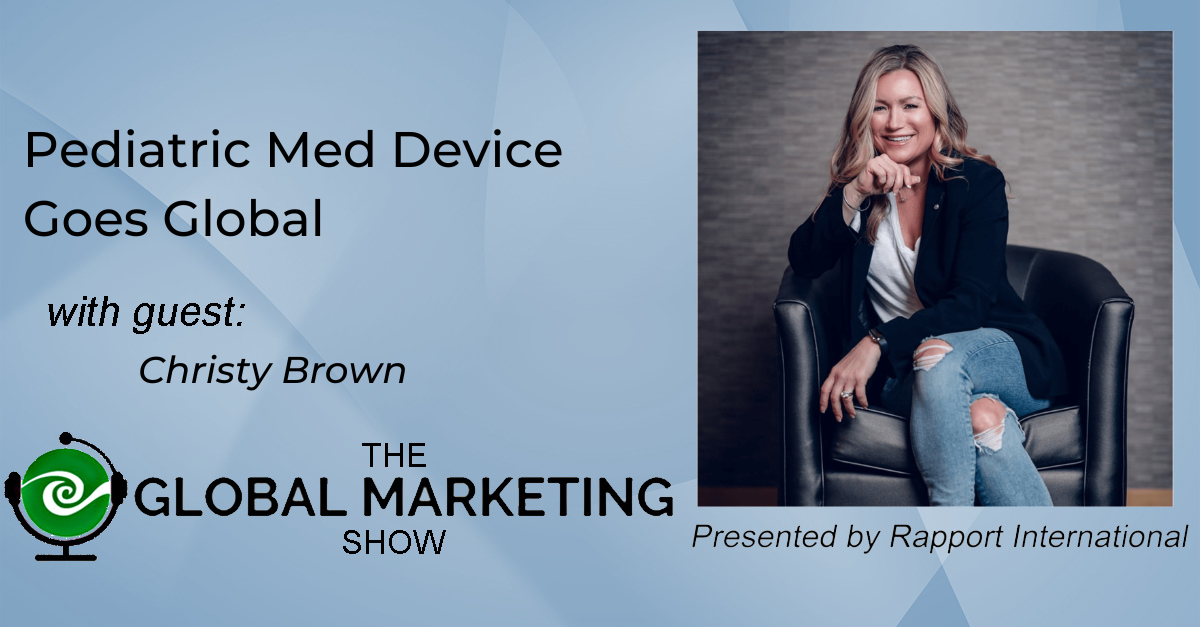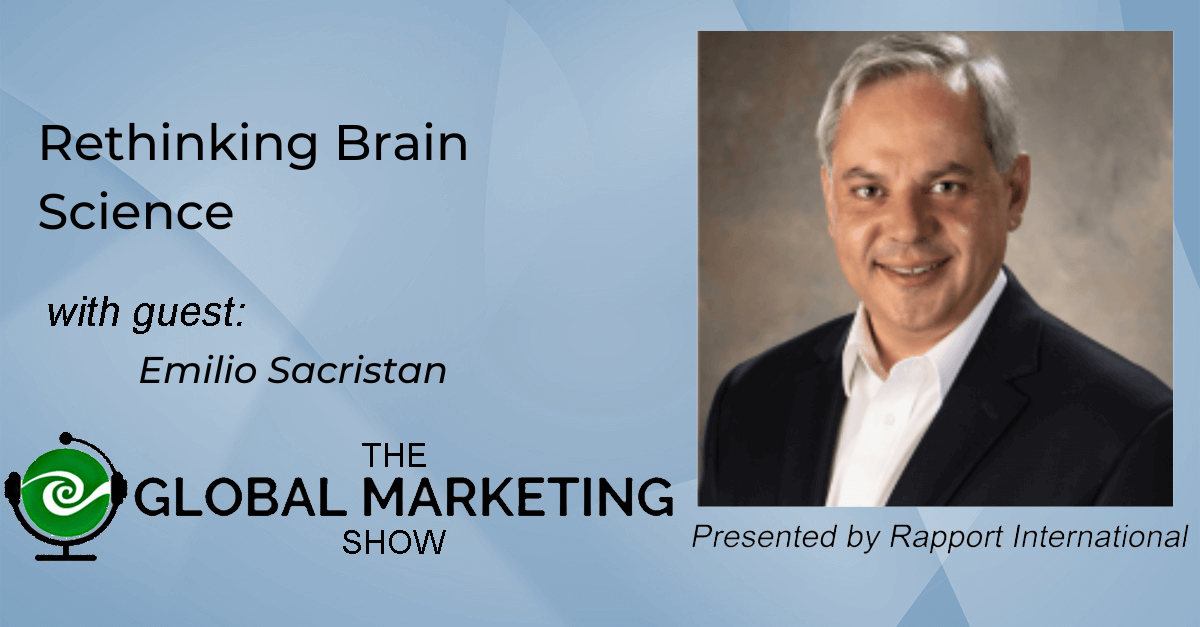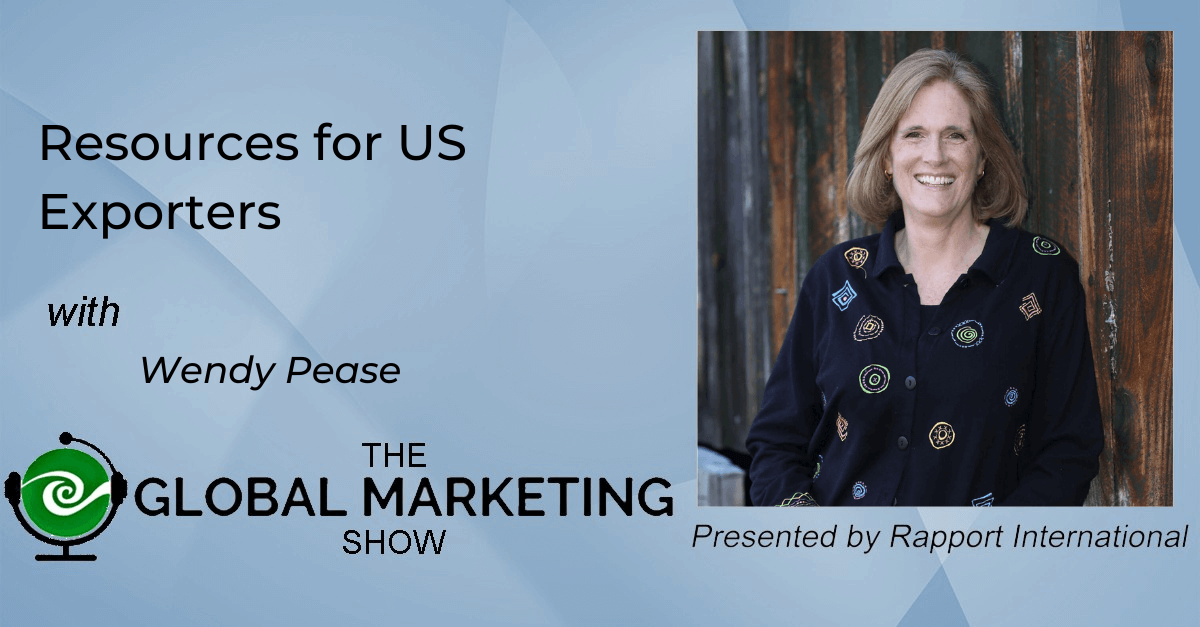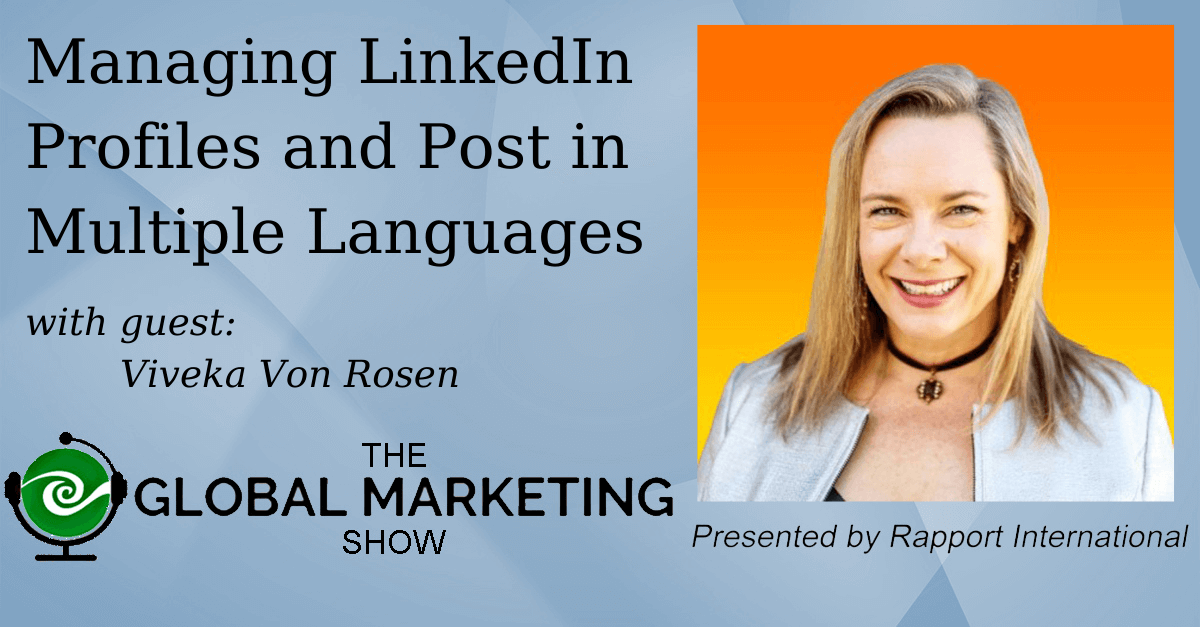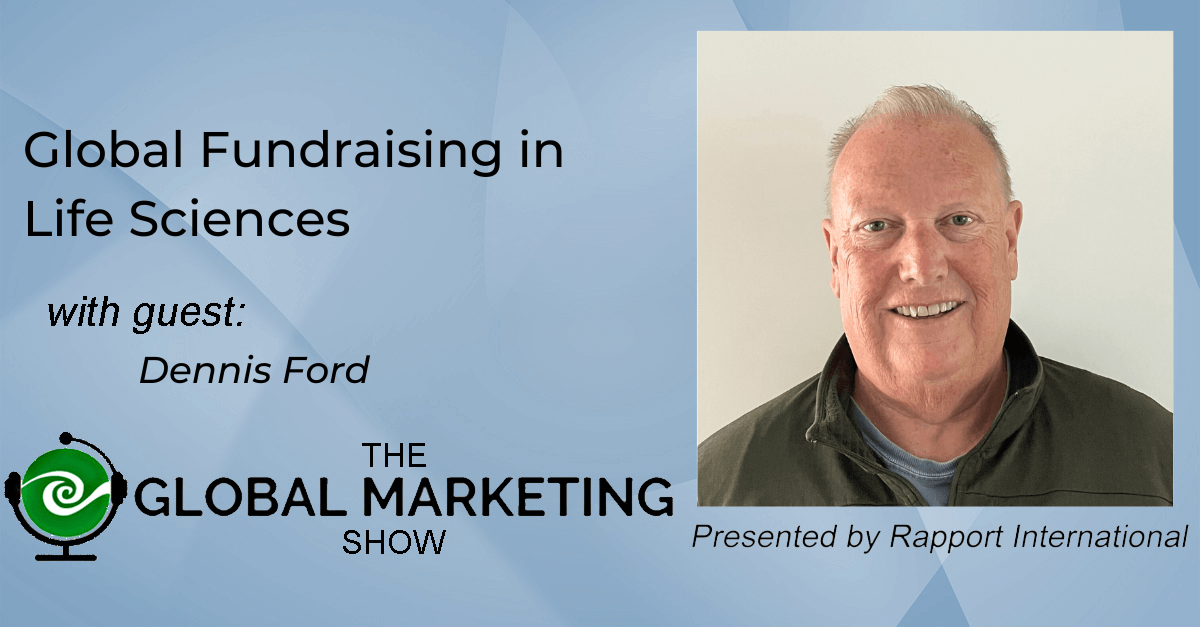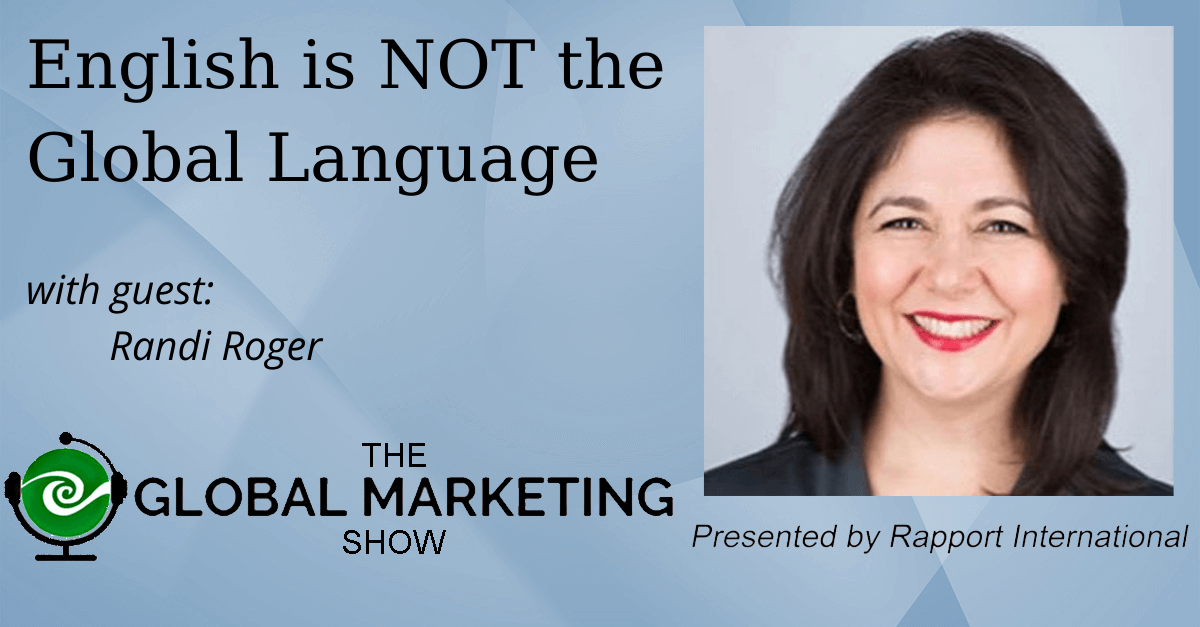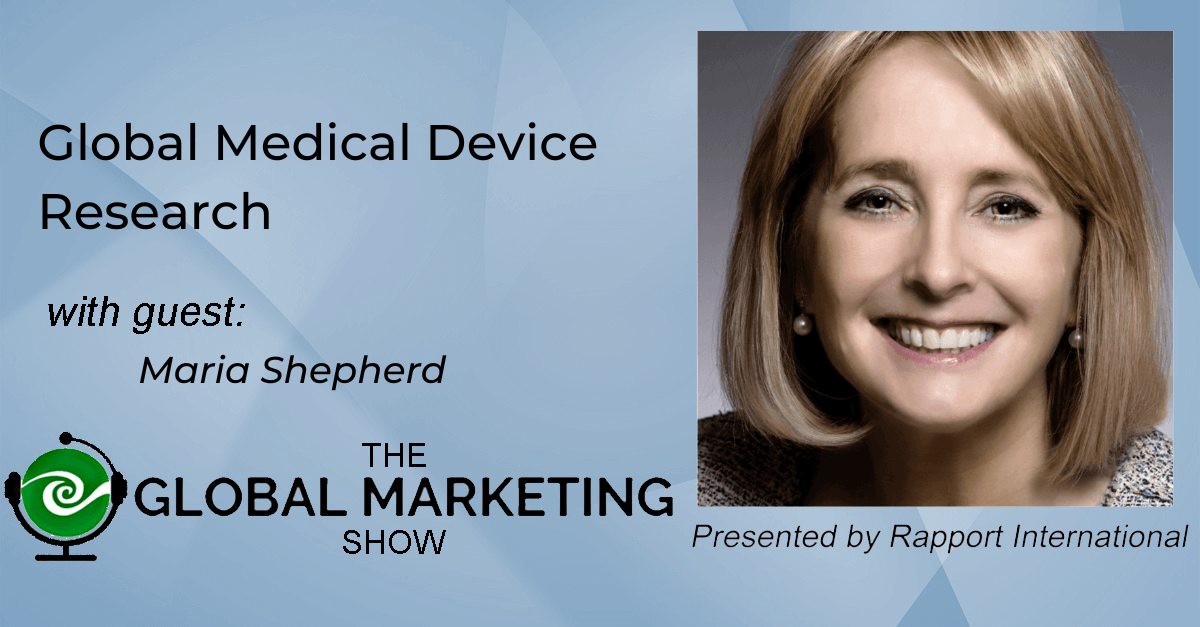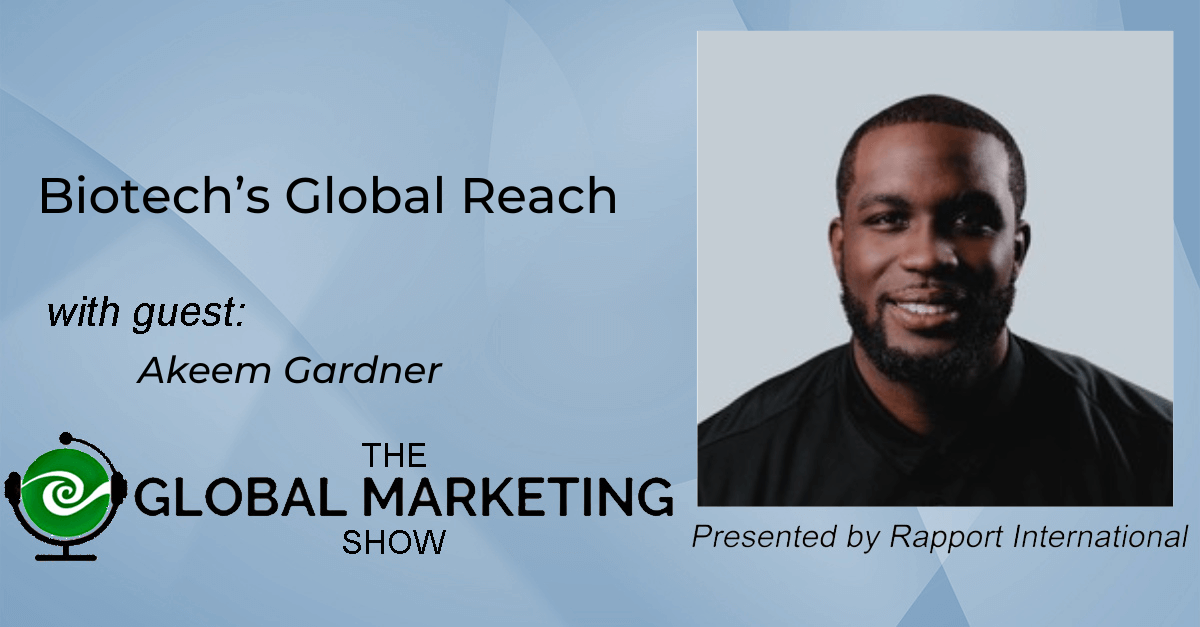Inge Carr is the owner of Altair Strategic Marketing, through which she provides Fractional and Chief Marketing Officer (CMO) services. Her vast experience consulting throughout the US, Canada, and Europe and fluency in five languages, gives Inge tremendous insight into how companies can successfully align corporate strategy with branding and marketing, especially internationally, to drive revenue.
Inge was a member of the team who created an award-winning campaign focused on marketing Canada to Olympic visitors. She reminds us that people coming from other countries to Canada may connect with different messages. And it’s not dependent so much on a person’s country of origin, but why the person is traveling.
By hiring a market research company, the team was able to determine what experiences people wanted and how they wanted to hear about it.
For example:
1. Northern Lights
UK and Germany: “See the grandiose lights with standing room only.”
US: “It’s standing room only for the greatest light show.”
France: “Incredible light show and training of the dogs.” (This was the direct translation but I’m not sure what it’s supposed to mean!)
2. Glamping
The US is the only country interested in “glamping,” or luxurious camping. It’s not talked about in other countries.
3. Sailing Nova Scotia
UK, Germany, and France: “Have a wonderful lunch of lobster and scallops and enjoy the view for dessert.”
US: “Lounge around all day and have a 5-star meal for dinner.”
Inge also mentioned that a great translator simultaneously provides multilingual marketing insight to companies without a hefty Olympics-sized budget. (I certainly agree, at Rapport International our translators do it all the time.)
Among the team’s challenges were initial social media posts that did not perform as well as expected. Yet they knew to keep tweaking them until they increased their response rates.
In another role, Inge worked with an insurance company struggling with 20 different brands and a fractured brand experience. Representatives from each of the brands worked together to build a unified brand that worked across multiple languages. And although there were no language specialists in the meeting, each team member had deep experience with translation, so they resolutely kept translation issues in mind.
If you are interested in seeing how Rotary International unified their brand in multiple countries and how they handled language translation and cultural adaptation, tune in to The Global Marketing Show, episode #17.
Inge’s final words of advice: make sure to hire a professional translation organization to get the support you need. If you can’t clearly communicate your value proposition and messaging, you won’t emotionally connect with your audience. And since 90% of decision making is driven by emotion, you will also miss out on sales and lose opportunities.
Inge’s favorite word is Dutch slang for “ATM”: “Flappentapper" (flappen - tapper)! Just say it to laugh, she says. It literally means:
- Flopa: currency or bills
- Topper: the server who dispenses the beer at a bar
I’m adding that word to my lexicon!
Links:
Website: https://www.altairmktg.com/
LinkedIn: https://www.linkedin.com/in/icarr
Email: icarr@altairmktg.com
Phone: 760-655-6451
Connect with Wendy: https://www.linkedin.com/in/wendypease/
Music: Fiddle-De-Dee by Shane Ivers https://www.silvermansound.com
ATTENTION: Below is a machine-generated transcription of the podcast. Yes, here at Rapport International we talk a lot about how machine translation lacks quality. Here you see an example of what a machine can do in your own language. This transcription is provided as a gist and to give time indicators to find a topic of interest.
Wendy: Hello global marketers and welcome to another episode of the Global Marketing Show. Today I'm just, I'm smiling, I'm laughing because that's what we're gonna do on this episode. So I'm really looking forward to introducing you to the guest. But before we do remember that the podcast is sponsored by Rapport International, who always provides us with a tidbit for the start of our show.
And [00:01:00] today's tidbit is about rain, cuz it's spring here in the northeast of the United States. And in English, if it's raining, we say it's raining cats and dogs to describe a hard rainfall in Czech they say that it's raining wheelbarrows. And in Dutch they say it's raining shoemaker's apprentices.
So Inga Carr is here, her native language is Dutch. And I gotta
confirm
my source here. Is that what you say? If it's raining hard?
Inge: Will I keep on learning myself? I guess
Wendy: you keep what?
Inge: I keep learning even in my own language, I guess, cuz I had not really heard that one before. But I love it. I'm gonna, I'm gonna use it. So
Wendy: If you were in the Netherlands Yeah. And it was raining really hard and you wanted to say that in a fun way, [00:02:00] how would you say it?
Inge: Yeah. I, God, you stumped me there for a moment.
Yeah, there is not really, I haven't really used dad in, in a fun way. More in a horn. It's raining hard again, but then again, it's, it's so normal in Holland that it rains so much that.
Wendy: So, have you ever heard, so you've never heard of raining shoemaker's apprentices?
Inge: No, I haven't.
Wendy: That is why I picked this tidbit out for this episode because it's funny how sometimes we'll learn things from one person or ai, be really careful about using that cuz you'll come across things that are made up.
So, but anyway, let me introduce you, Inge. So Inga Carr, she's got a. Fantastic background in international roots. She's worked in Europe [00:03:00] obviously in the Dutch language, and then she moved over to the US and Canada back and forth a couple of times. So she's got lots of experience working across country and she speaks five languages.
What five languages do you speak Inga?
Inge: English, Dutch, French, German, little bit of Spanish. I ventured out in other languages, but it's so poor that yeah, I won't go there. But I love languages. I love it. I do. Yeah. And
Wendy: so that gives you a real advantage for doing international marketing cuz you, you instinctively get the importance of language.
All right, so she's got a tremendous background. She started in sales, she's been a software developer, and then her love, I'm guessing is uh, she's become an expert in revenue driven marketing. She's worked with multi-billion dollar enterprises and she's worked with venture field startups. That wanna have a global reach from the start.
So it's very exciting for what she's gonna talk about today in her experiences. [00:04:00] It's both, it can be applied to both startup and enterprise. She's now a fractional or interim, c e o and she owns all tier strategic marketing. So we'll give you contact information on the end. So, Inga, welcome. I am so happy to have you here.
So, give me a good story about global marketing or working in a, in one of
Inge: these countries. Oh. Where it's almost like where to start, but I think let's start where How, how important, like what is important to your international growth? Kind of what is the key to success? And it gives an insight why I am excited to be part of this show and talk with you, Wendy, because.
From where I stand, you know, my experience, it is definitely, it is language. And what do I see as language? Language is not only your words, absolutely, but it's also your visual [00:05:00] and behavioral and all that is packaged up in your brand and to determine how you express your brands. On an international level, of course it's, it depends on your operating structure, so your decisions in your international operating structure, but also on your resources and who you are.
So if you like, I can go and dive a little bit deeper into that on how, why the languages is so important. Because language is. Inly connected into the behavioral role and of course
Wendy: we don't wanna, yeah, I think they just made a really good point that I wanna pull out as so many think of people. So many people think that the brand is just something that marketing comes up with and the name of the company and the logo, but you just brought up that it's operations, it's resourcing decisions, it's the culture, it's the who we are.
[00:06:00] Like your brand really resonates. Throughout. Yeah. And then it gets to be a real challenge if you work in multiple countries because we have different ideas and feelings and language. Right,
Inge: exactly. And I think that that's where you really hit a, the, the core of it is because in all these different countries you have different societies, different languages.
And everybody has different experiences and all those experiences, they create emotional triggers that result ultimately in their needs and in their wants. So if we focus on, we want to gain trust because that is the ultimate where decisions are being made. We need to be. Understanding of what those emotional triggers are, because 90% of our [00:07:00] decision making is actually done on the unconscious level.
It's, it's, we make decisions 90%. Based in, in an unconscious, in our unconscious awareness, and only 10% is the actual, the how to aware, the why. That type of decision making that's really in front of our mind. So
Wendy: it's a, and is that unconscious level, is that both for business to consumer and business to
Inge: business?
Absolutely because, and I think it's a great question and I'm really glad that you're, you are, you are touching on that because a lot of people, they go, oh, well, you know, that's for the consumer that is not for b2b, that doesn't hold water because it's based on the actual functioning of the brain. And it's the functioning of the brain.
That's what we call in neuromarketing. [00:08:00] Basically, that's where you're gonna start touching that level of of focus is where we really look at. How do people make decisions and how does the fun, the, the brain function in accordance? And that's why at the end of the day, you're still marketing to people.
Doesn't matter if you're B2B or b2c, at the end of the day, they're still people. Now, you may, in your conscious awareness, You may decide, oh, you know what? These points are important for my decision making and these are the things that I need. At the same token that, so that is kind of the frontal process.
At the same token and the unconscious level, this is where you start gaining that trust and that first emotional trigger of. I wanna spend a little bit more time here. I want to find out more. I don't wanna click out of their websites yet. I want to [00:09:00] stay here because there's all these triggers that making unconscious sense to me, and that's why that's driving me to stay on this piece of website, brochure, email, whatever it
Wendy: is.
Okay. You know, so talking about the brain, I'm gonna jump talk topics. I've heard that Olympic athletes, you know, they don't win on skill at that level. They're really winning on the brain. Now I remember talking to you that you worked on the Olympics in Canada. Can you talk, I mean, I'm fascinated by that and I'd love to hear your experience of how the Olympics, like what you did there.
And I think it was in multilingual marketing. Yes,
Inge: yes, yes, that's right. It's, I mean, think about you know, during the Olympics, you know, you are now marketing an entire country as varied and complex as Canada to the entire world. So [00:10:00] think about how the diversity of your product, Canada, And the diversity of all the cultures and all the languages that you need to hit simultaneously on a, on a global basis.
So how do you fit your culture, your languages, and then the distribution of assets across the globe to all these different pre people. And that is not only. From Oh, to the consumer. It's also, you know, to, to tour operators. It's also to your own internal network of your own organization of people in country.
So you are hitting many different segments. You're hitting b2b, B2C ends your internal. So we actually had a Structure that set us up for, for success. And the success was really at the end of the day that they won the world leading [00:11:00] marketing agency awards that year. So, uh, that's great. They won the award.
Wendy: Yeah.
Inge: It's something, right? So how did we go about that? So I was part of the brand experiences unit, and we came up with a way to what we called our brand experiences, right? And how to content. So the br to give you a little bit intro into that, the brand experience, different facets that went into that, into our consideration before we determined what the experience would be and how we would market it.
So, of course there's some structural things that will just go over very quickly. It's kind of the role in Canada, in the brand development the unique selling points, of course, the criteria for brand aligned travel experiences. And then what we, okay, so
Wendy: what are the unique [00:12:00] selling points? Do they go across?
All cultures and languages for coming or did you divide those out by who'd be more interested in what
Inge: it when? Both actually. So it depended on, on the culture. So where, so in which country some experiences were promoted. In, in multiple countries, but they may be translated in different ways and I can give you some examples of that.
Yeah, dig. Dig into that there. I want finish up that, because I think it's worthwhile for your, for the. For, for your listeners. Okay. And what, what's what it all entails because then it gives them the, the package. So we, we talked about the role of Canada in a brand development, the unique selling points, the aligned experiences, the EQ experience quotient tagging.
This is where we're getting into what you're asking [00:13:00] about. Then we inventoried those into what we call the travel experiences inventory. And then of course we worked on the assets and, and, and the, the toolkit. So if you, but I'm hearing you want to skip over some of this stuff and go straight into the experiences, so let me give you some examples.
No, no, no.
Wendy: I jumped you ahead so No, it's, but I let you get down into the details of what people found and where they made mistakes. Like if there were ones that you thought was a unique selling proposition for one country, but then you found that just bombed or you know, how you translated it and why. So that you know.
But go ahead and say how you did it, cuz obviously it was successful, you won
Inge: the award. Yeah. And and really it came down to really doing your homework, right? It's like you have to do your homework. So if you look at[00:14:00] your, you know, What experiences were brand aligned? So we used three different tools.
We used our unique selling points, our brand aligned criteria, and then basically the product market matching. And that's kind of what at the ultimate, what we're talking about. And for that market matching, we actually worked with a A research company that was their name was Enviromics Research Social Values Model.
And they had an EQ model that was called Explorer Quotient. And that allowed us to effectively develop an EQ profile based on the pe the reasons why people travel. So it wasn't solely based on age, gender, education, but also included the qualities of someone's personality. And so if you then dig into that, for example, let's, let's [00:15:00] dig, dig into it.
I know you wanna dig into it. One of the things of course, is the Northern Lights, right? Everybody knows you go to Canada and one of the exciting things is to experience the Northern Lights. Well, when we would when we would promote that within the UK and in Germany, We would basically say at the most grandiose light show of the world's only standing room is available anymore.
And that, that is kind of the deck translation from English to To Germany? Yeah. In English in the uk we would just say standing room only at the World's greatest light show. So you see how those back translations, you get this nuance. Now if you would do it to Mexico, the US or France, it would be a little bit [00:16:00] more aligned with the English.
But say in French, you would almost say, if I were translated back, is Uh, there is an incredible show, light show and training of the dogs makes sense, but in French.
So this had all to do with the northern. Lights show. So it's, it's interesting the
Wendy: intention of the French translation. What does the training of the dogs have to do? Like what does that mean?
Inge: Well, I think in this case because to part of the experience to get to the Northern Lights or one of a site experience you could have that we connected with, it was actually doing dog [00:17:00] sledding.
So Right. It kind of inter interconnected. Now there is, for example, a whole different one that we only used. Wait,
Wendy: wait, wait, wait. I'm not getting it. So to talk about the Northern Lights, they wrapped in like dog sledding. Mm-hmm. Did you have to go dog sledding to
Inge: No, no, no. It's just, remember this is just the, a caption of the campaign to, to get people's attention.
So you have an image of a caption of the campaign and then you dive into. Whatever the article is.
Wendy: So I am dying for you to send me the exact French phrase and we'll add it to the show notes because I think that it's just fascinating because the direct English translation doesn't make sense.
So there was a meaning that means something to people from France.
Inge: Yeah, well, exactly. And that's what we're talking about, right? Like yeah, for example to [00:18:00] give you a more obvious, an obvious experience which was glamping, right? It's kind the luxury camping. Mm-hmm. Well, the only country where we promoted that was in the us nowhere else in, in the world.
So it, it gives you another insight into how we differentiated things because we felt in Germany or France or anywhere else in the world, people were not as interested in that.
Wendy: That is so interesting cuz I remember a company that made inexpensive containers that you, they were so cheap you could throw 'em away, but they were well enough built that you could wash 'em and reuse 'em and it, they didn't do well at first in Europe.
Because people are like, well, are these reusable or disposable? They wanted clarity. And this makes me think of that glamping. Do I want [00:19:00] glamor or do I want camping? You can't do glamping. Yeah. So, yes. How
Inge: funny. Yeah, and and another fun one. I can do is I can give you, is like sailing in Nova Scotia, for example, Where we said, okay, had lobster and scallops for lunch and an incredible view for desserts. And we did that for the uk, Germany, and, and France. That's kind of the header. And you know, more or less translated like that. Yes. But for in the US what we said, Lounging on a yacht by day five star dining by night, very different.
But that's kind of what came out of the research is that's what was appealing to the US markets and not so much to say England, Germany, and, and France. So that's why there, it had more, you know, in Europe had more lobster and scallops for lunch [00:20:00] look food based and an incredible view for dessert. So,
Wendy: that's fantastic.
You're not gonna tell an American they can't have their dessert. Right?
Inge: So it's, it's interesting that that's, that's slightly nuanced, but again, it's so important. And that's kind of you know, your, you where your role, where your organization comes in so strongly where. Sometimes a direct translation is not the best way to go. It's, it's, yes, your product is the same. So in this case, you know, sailing in Nova Scotia that is still the same, but, and your image may be very similar, although we also made image differences, but I'm not gonna go there because it gets way too complicated.
But how you translate the experience, the emotional trigger, what was important in, in the language that made people want to read more [00:21:00] about it or want to actually go and do it? What made them take action basically? And that is the key to success. It's in your translation. And if you have a great organization, a translator that works with you, They can make you aware sometimes of these things like, Hey, you know, this is a great approach at lobster and scallops for lunch, and an incredible view for dessert that really works well for, for England, like for Europe.
But you know, in the US we need to tighten that up a little bit. We need to give it a different slant and talk about lounging on a yacht by day and five star dining by night. Like we need to be, you know, a little bit more. It's just a different angle, right? And that's where you get those nuggets.
Wendy: Yeah, that's, yes, that is so, so true.
Because I know that there's been times that the translators will come back at Rapport International and they'll say, well, this just doesn't make [00:22:00] sense. It's not gonna work because family's not included. Or There's too much family, or it's too indirect when you need to speak direct. So all that cultural adaptation is so important that a good translator can do.
Yeah. Yes. Yeah. So was there anything, I mean, it sounds like you did incredible and you won an award, so it doesn't look like there were any missteps or any, you know, funny little things that happened. But I gotta ask just in case, like along that way, was there anything to share there as a learning nugget
Inge: for us?
Yeah, the, and, and first of all, it wasn't I won the award, right? It was the organization. Right. It's a whole, this is a big thing. And, but we kind of found sometimes that although we, we tried it, but then we would go out on social media or anywhere else, we would find that it may not be as as, as, as [00:23:00] successful as we thought it would be.
And then we would tweak it. We would tweak it on the fly and say, okay, you know what you do your AB testing right? This image against that image, that's slightly different angle. Does that make a difference? And, and we would do that. We, we, we definitely would do that. But you know, this is obviously a, a large organization that at that time had a lot of money coming in to really do a great job.
And really dig into and, and had the resources to make it a success. So, you know, we, we started from the roots very strong with a very solid structure, you know, great research that was conducted and then rolled it out and kept doing our testing, and then it became more tweaking. But I know you don't always have those opportunities, right?
You, you don't, you don't, you can't always do that. [00:24:00] Sometimes you just don't have the resources. And for example, I was working you know I was heading the brand department of a travel insurance segment of the cooperators. And the organization as a whole, we had over 20 different brands or marks in the portfolio.
That was going to different market segments, again, b2b, DTC agencies, distributors, and we had to provide marketing to support for all of them and all needed theran, you know, English, French specifically translation. And although it was a, you know, multi-billion dollar organization, still the amount of resources that it required Managing those brands, I have to say was a little bit of a, a little bit of a mess.
There were inconsistencies and therefore we had brand recognition loss. So we actually went through an entire brand system exercise[00:25:00] of how we, you know, how we should. You know, kind of what structure should we really have and that really at the end of the day, and I can, you know, go over some of the, the brand names and symbols and, you know, all of that stuff.
But you can imagine we had over 20 different brands. Mm-hmm. Limited amount the resource, so we. Felt we needed to organize it and still have the flexibility. We really needed the organization because with the different ways of translation and trying to keep track and up to date and all the different brands, right?
Because if you have a brand name in English, it was a different brand name and logo in French and. If you have 20 of those, I mean, imagine, I see
Wendy: that as a huge problem with so many companies saying, well, we let our distributors [00:26:00] handle that in country. And then if you have distributors in five different Spanish speaking countries, You got five different brand messages, organizations, service levels, and so you're not building that global brand, which can help you build greater recognition.
Exactly. So how did you, how did you go about cleaning that up?
Inge: Yeah, so we went through a whole, whole exercise that involved, you know, representatives of all of all of the brands and We all agreed, and that, that's kind of the, the fundamental thing. Like we first sought to create agreements in what was, what were the of issues, and there was a solid agreement that, hey, the confusion is causing damage to our brand.
We all feel that a brand hierarchy system is required. And that it should [00:27:00] account for all of the companies. And we also acknowledge that kind of the staff sense of ownership of the current brand could create some resistance in, in adaptation, right? We also agreed though that it had to work. The, the new approach had to work for all the languages that we were using.
And I think that's key. So at the end of the day, you know, you, you, you go through these different brand structure possibility, which is like a holding company or an asymmetrical company brand structure. We ultimately decided for the master brand brand, Because of its efficiency. You know, yes, we are a large organization, but at the same time, the amount of resources required to brands and to promote all these different products under different [00:28:00] logos was, was just not an efficient way to do it.
So we chose the master brand. Basically it was the simplest structure. And you just have one, one logo and English and, and a French so basically two. And then all it's, it's variations on that. But that was just from an efficiency viewpoint, the best. And
Wendy: then that's a way, so curious about in the meeting you brought.
Representatives of all the brands in, and then how were they doing their translation? Did they have agreements with different translators? Was there an internal department? How was that handled? Yeah,
Inge: so there were, because of these different, this was an organization that was built up out of several mergers and acquisitions.
Mm-hmm. And So in, in the beginning, it definitely, like [00:29:00] every kind of segment or most segments still had their own systems. So in the, the area that where I was focusing on my department I had my own my own company, a external company that was doing the translation. And that was becoming very familiar w with our brand and indeed would give those recommendations of, oh, you know what, you're doing this campaign, you know, when you do it to, in France, we need to tweak it, you know, this way or that way.
And, and they were, they were very, very valuable. They were very helpful and safe. There's a lot of time, And for some, Other units, you know, they still lived under maybe a smaller brand. It could have been done by the, you know, kind of under, under the, the master brand's own company name. So that would kind of flow in together.
But at the end of the day, everything merged together and [00:30:00] everything is now operating as, as a unit. So over time, those resources came together.
Wendy: All the resources came together. Now, did you have anybody internally on that on the exercise where you brought the representatives of all the brands? Did you have somebody representing the translation and the multilingual communications in that?
No.
Inge: So what we had we had basically the representatives of each brand, so of each brand unit. And and, and each, you know, kind of. Organizational or operational structure within the organization That was, you know, maybe one was I don't know, car or the other one was, you know uh, farm insurance or house I, there were all these different, Segments basically that would come together.
So the internal, that structure in the beginning, what type of brand structure are we going [00:31:00] to use was an internal process. But for, as I said, for the implementation, some of the translation or lot of translation was done with external resources. Yeah. And then, okay,
Wendy: so the reps. The representatives that were there representing the brand they were thinking about the translation and what they had to do because sometimes what can happen is all those people get together.
They think how we're gonna do the branding. They come up with something and they haven't thought about the other languages. So what they come up with doesn't
Inge: work. Yeah, because we were in markets in, in, in, in, in, in kind of the, the French speaking, speaking area. And, and the English, in a way, the group itself was already used to you know, having, having to deal with two languages at the same time, that that was already ingrained within the, within the [00:32:00] structure.
Okay.
Wendy: Okay. Okay. That, that makes a lot of sense. So people are already thinking that way cuz I've heard of organizations that don't think that way and that's where they run into problems. Yes. Yeah. Yes. So this is fascinating. So we talked about the Olympics and then we talked about this large insurance company, even though they had a lot of smaller brands.
How does how does a small company or handle going globally or, you know, languages from the start if they know they, how they
Inge: have to go? Yeah, I think it's a great question because in a way we go back to kind of in the very beginning what we were saying what is your, you know, international growth, what's your key to success?
It's, it's your language, it's your words. Right, visual, behavioral. And at the end of the day, it depends on your resources and who, who you are. And so if we look at that you know, we looked at it from a very [00:33:00] large organization to, you know, the enterprise level. So a little bit smaller, like a few, you know, three and a half billion dollar organization.
But then if we turn that on its heads and you go to a startup, well for example you know, startup may be doing in, in construction because we talked a little bit about, you know, tourism and insurance. So let's talk a little for a moment about construction, which is very different. It's definitely B2B and And it's, it's really starting small, right?
It's if you are a startup, you really want to go through an internal assessment and creating a quadrant I think works really well where you measure your market attractiveness and your ability to win. And if you can be in that top right quadrant where your market attractiveness is high and your ability to win is high, then it's like, okay, you know, [00:34:00] we can go outside of our current border constraint.
And I think the easiest way is just to test it out, like. You don't need there an operational structure yet. You don't need to focus on that too much. It's more like it's a product. Why don't we do some test projects? But, and this is where it becomes ab absolutely key. Although it's a startup, you don't have a lot of resources, but the assets that you have and you determine that you need go to a.
Trans, your professional translation organization, such like yourself, Wendy, where you
Wendy: really
Inge: can get the support of translating your value proposition, so all your collateral to have the translated and relayed out professionally, because certain [00:35:00] languages, they need more space to say the same thing. So, Working with someone who has done that before and knows how to do that is, is essential.
So you, you, you've gotta spend the money. You, you don't have the internal resources, but for that, that's really the smallest, the best investments you can make is working with an organization that knows how to translate your value proposition into different cultures and languages. Where do you see AI
Wendy: going with translation?
Inge: Well, that was actually my question for you, Wendy.
I was actually gonna ask you, cause this is your forte in translation. You know, we all know right now I, AI is making a big splash in marketing and there is. [00:36:00] A lot going on in, in there. And I think from my perspective right now, AI is a, is a great tool tool to help you to, to maybe get that extra creative.
Twist or angle when you are dried up in your own words and you want AI to rewrite something, for example. Now of course in automation it's, it's, you know, strongly embedded already in there, and that's not really the topic of this conversation. So right now it's still, I think at the point you really need to double check your data.
And how appropriate is it? But you know, sometimes to write another creative piece, it can be very inspirational and helpful. But how, it's actually a question for you, Wendy. I would love you to answer that. How do it's working from a translation viewpoint Where I AI is at today. [00:37:00] Oh, today? Yeah, it
Wendy: is not there today.
I mean, I've been listening to podcasts with even the machine people, and they're all saying it needs to be reviewed. You know, they're talking about getting to a 95 to a 90% accuracy rate, but, and it's gonna be really hard. It'll never get to a hundred percent and that it, it's gonna be really hard to even increase after that.
But the problem is, You make one wrong word. Like I heard about a application for refugee status from somebody that had experienced a lot of trauma and you know, was a legitimate one and it changed I to we. And all of a sudden they went, well, who's this? We? It's not. I reject, you're out. You know, and I saw another instance where somebody was writing in English and it said something that was part of interpreter ethics.
This was actually an internal writer for us. [00:38:00] She added something to the internal ethics. Our review person said, no, that's not really an internal ethic. Where did you get this chat? G P T. And I validated it on some good resources on Google. And we went back and we looked at it and because the idea had been planted in her head, she was predisposed to, to believe what she read someplace else, but it was giving wrong instructions to an interpreter.
So, you know, we, we are very careful with what we put out and how we research it and the quality that we provide at Rapport International. So it. You know, I like technology. I mean, that's just a crazy, exciting thing if I could go anywhere in the world and speak to anybody, but it's got me really worried.
And so if you're using AI or chat G P t for your translation, get it over to somebody to professionally review it, and if it's confidential, You got a [00:39:00] whole different problem because you've just put it out to the universe and you've lose all rights with that. So enterprises are struggling right now. So I think where it will go is that we'll develop.
Personal histories for companies where it, it's similar to translation memory where once we've translated it, it'll, you know, it comes out with, so you don't have to redo it. But if we could build those individual memories for companies and then they can use it, it'll get better and better. Yeah. So I'm really afraid in the short term, just like the.
The
Inge: programmers who developed it about how it's being used and the fake stuff that can be believed. Yeah, exactly. And also I, I think that's a great point and also it can maybe translate with all the inaccuracies as you, as you mentioned, but then also if you look at that from a brand viewpoint, It's like we just spoke how [00:40:00] important it is to really, you know, adjust your language to, to a specific culture and, and country and language for them to get the drift and for them to get that emotional hook.
And, you know, AI isn't there yet to be able to do that. Right. This,
Wendy: this said it'll shake out a lot in the next six, six to nine months in the industry. But in the meantime,
Inge: just be very wary of it and keep a careful eye on it.
Wendy: So,
Inge: yeah. Well, we are,
Wendy: we are out of time. This has gone so fast because it's been very, very interesting.
You know, this is coming at you. What's your favorite foreign
Inge: word? Well, I would not be Dutch if I would not take a Dutch word, but there is a Dutch word that was invented in, in Holland that I, the [00:41:00] first time I heard about it, it, I thought it was hilarious and it always stayed with me. And it's so typical of the Dutch humor and that is the, The Dutch slang for an ATM machine, and we call that in Holland.
It's a flop. A flop topper. Flop topper. Yep. And so F Flopper is a, a Dutch slang for dollar bills. And Tupper is the person tapping beer by pulling the tap handle. So hence the ATM machine,
Wendy: which is if you put at m into a machine translation or a ai,
Inge: you'd get, you know, you'd get atm, but Uhhuh,
Wendy: but, But it might be much more appropriate to use a flop topper.
Inge: Absolutely. If I would be, [00:42:00] if I would be you know, working with a financial organization that has to do with I dunno currencies and things like that.
And you want to attract the Dutch consumer in a fun way? Definitely. I wouldn't say, you know, the ATM machine, I would, you know, to the consumer I would. Do some fun spin on the flop topper. Oh my
Wendy: gosh. We gotta get that into the United States. That's a really good word. To adapt, to adopt the flop topper.
Inge: Yeah. Yeah, yeah. The Dutch are, are very inventive in their, in their words. And my, my husband who has French roots. He is US citizen, but his mother was French. So we have an international family and so our conversations often in English are peppered with all kinds of new made up words.[00:43:00]
Wendy: Yes, I went to Mexico in first and second grade, and then I lived in Mexico and Taiwan. And I, and I find I create words when I'm trying to look for something that I'm trying to say. Say so. I can't even imagine with all the languages you're bringing in there, it's gotta be fun. Send them over to me when you come up with them.
Send
Inge: them over. Oh, okay. Okay. I will. Yeah. I always get a, sometimes I'm not even aware. I get a reaction from my husbands and he goes, What, what, what is that? Well, you know, this, this, oh, you mean blah, blah, blah. And he go, yeah, that's it.
Wendy: Soon as you do that, or he gives you one, just jot it out in a text and send it over to me.
A text or email, whatever
Inge: will do, will do. You're wrong.
Wendy: Okay, so there are people out there that might want marketing advice and you certainly have tremendous experience and you work as a, you know, a a C M O for companies when they need it. [00:44:00] You also can consult with companies. Where can people meet you?
Or reach
Inge: out to you. Sorry. Oh, okay. They can go directly to my email. It's icar alta mktg.com or they can go to my website, altair mktg.com or give me a ring per in person is always cool and 7 6 0 6 5 5 6 4 5 1. So I'm always. Available for a little chat.
Wendy: Okay, so email is icar, that's I C A R R ter marketing.com.
A LT A I r mktg short for marketing.com 7 6 0 6 5 5 6 4 5 1. So thank you so much for talking [00:45:00] with me today.
Inge: Wendy, I really, really enjoyed it. It's great to see how Intricately Translation is involved with branding and our marketing efforts, and ultimately to the success of, of an organization going abroad.
So it was a pleasure talking to you.
Wendy: Yes, you too. And for those of you who are interested in global marketing, you can certainly search the language of global marketing to read more about the book that I wrote, because a lot of these stories come up, mistakes advice for how to do it well. So if you're starting out.
Or even if you're enterprise and you're, you want to consolidate brands, either reach out to Inga or grab a copy of my book and go read the chapter about Rotary International, cuz they went through the same thing and how they could coordinate a global message. So yeah do that.[00:46:00] It's the language of global marketing and certainly like us, give us a five star subscribe and we'll talk to you next time.
Thanks so
Inge: much. Bye-bye.
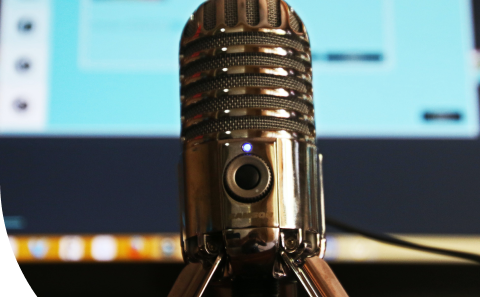
Are you a global marketing professional with stories to share?
Popular Posts
Popular industry news, interviews, technologies, and resources.
